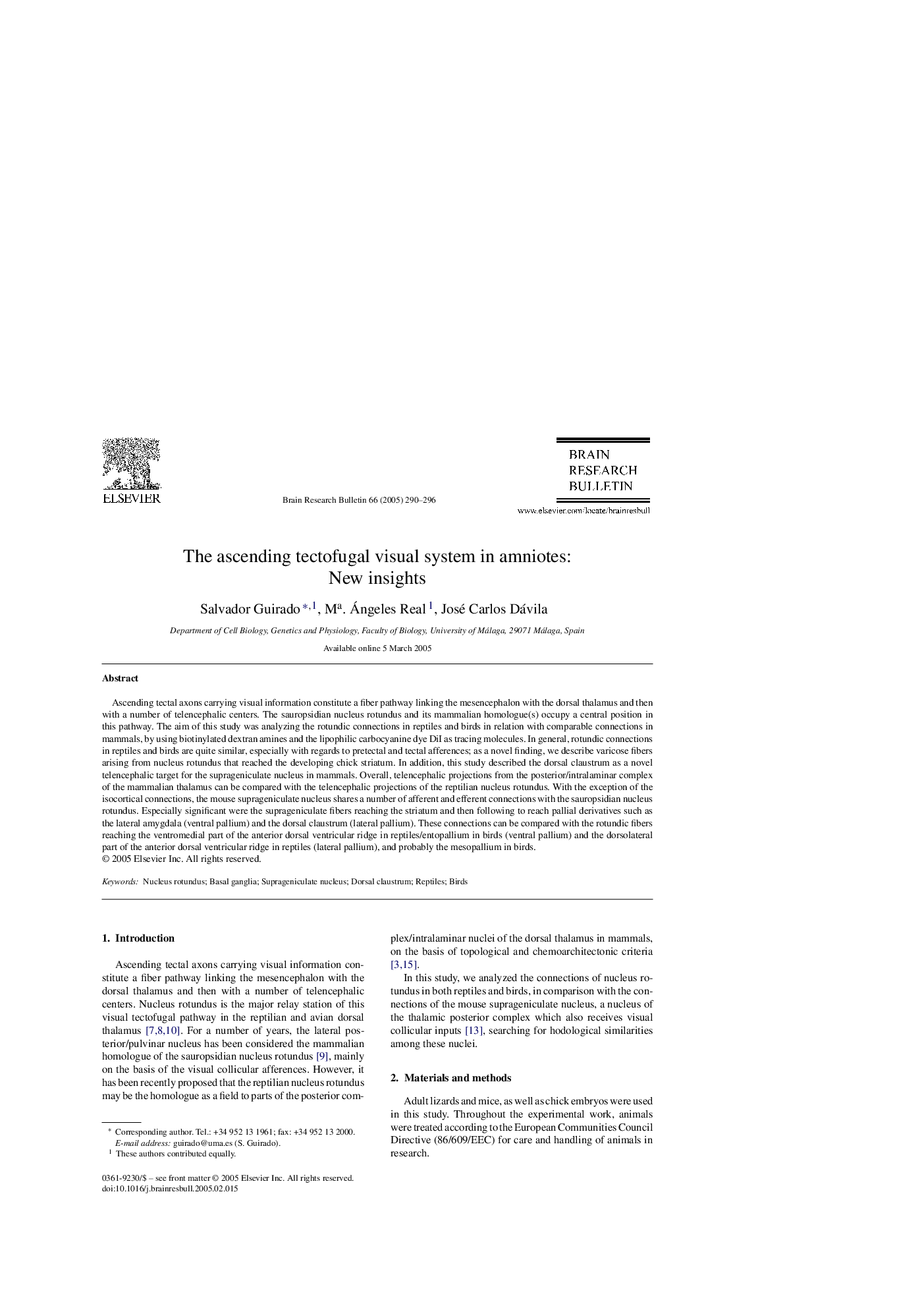| Article ID | Journal | Published Year | Pages | File Type |
|---|---|---|---|---|
| 9409416 | Brain Research Bulletin | 2005 | 7 Pages |
Abstract
Ascending tectal axons carrying visual information constitute a fiber pathway linking the mesencephalon with the dorsal thalamus and then with a number of telencephalic centers. The sauropsidian nucleus rotundus and its mammalian homologue(s) occupy a central position in this pathway. The aim of this study was analyzing the rotundic connections in reptiles and birds in relation with comparable connections in mammals, by using biotinylated dextran amines and the lipophilic carbocyanine dye DiI as tracing molecules. In general, rotundic connections in reptiles and birds are quite similar, especially with regards to pretectal and tectal afferences; as a novel finding, we describe varicose fibers arising from nucleus rotundus that reached the developing chick striatum. In addition, this study described the dorsal claustrum as a novel telencephalic target for the suprageniculate nucleus in mammals. Overall, telencephalic projections from the posterior/intralaminar complex of the mammalian thalamus can be compared with the telencephalic projections of the reptilian nucleus rotundus. With the exception of the isocortical connections, the mouse suprageniculate nucleus shares a number of afferent and efferent connections with the sauropsidian nucleus rotundus. Especially significant were the suprageniculate fibers reaching the striatum and then following to reach pallial derivatives such as the lateral amygdala (ventral pallium) and the dorsal claustrum (lateral pallium). These connections can be compared with the rotundic fibers reaching the ventromedial part of the anterior dorsal ventricular ridge in reptiles/entopallium in birds (ventral pallium) and the dorsolateral part of the anterior dorsal ventricular ridge in reptiles (lateral pallium), and probably the mesopallium in birds.
Related Topics
Life Sciences
Neuroscience
Cellular and Molecular Neuroscience
Authors
Salvador Guirado, Ma. Ángeles Real, José Carlos Dávila,
